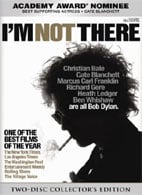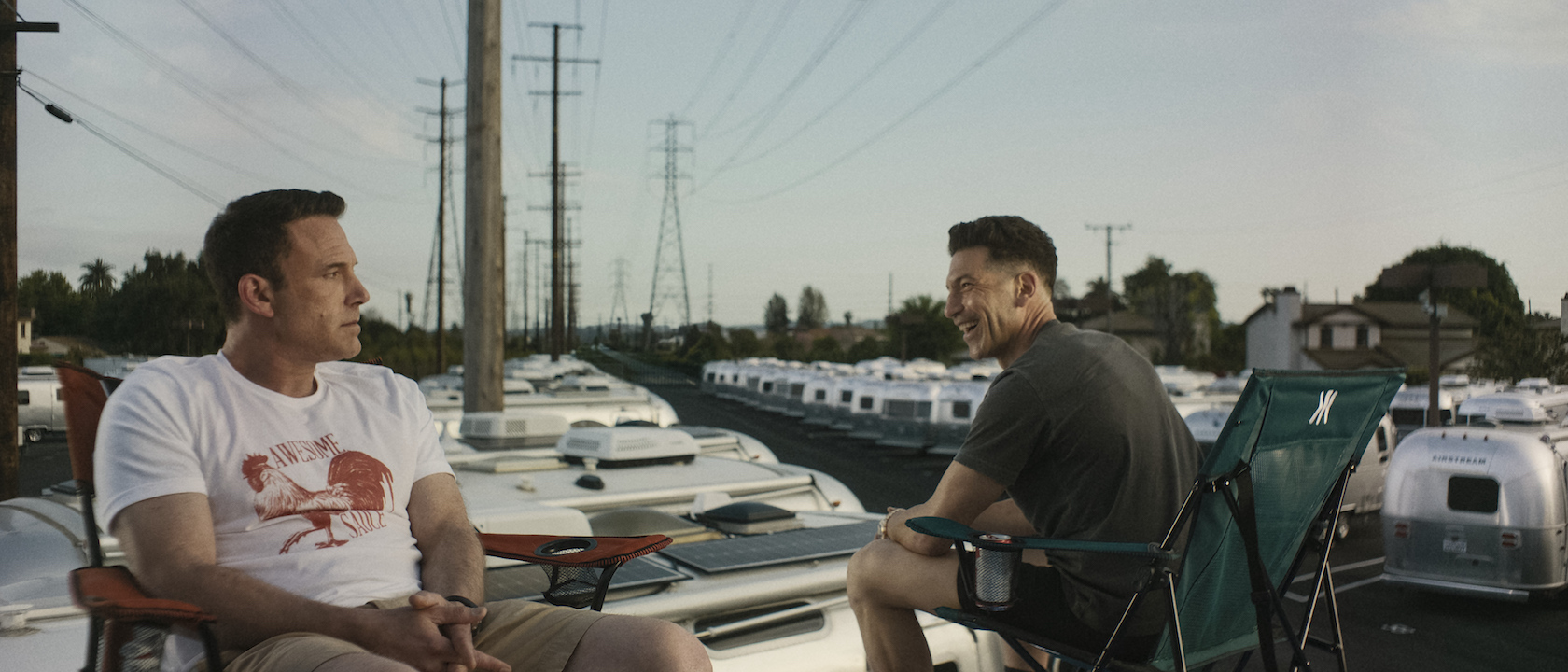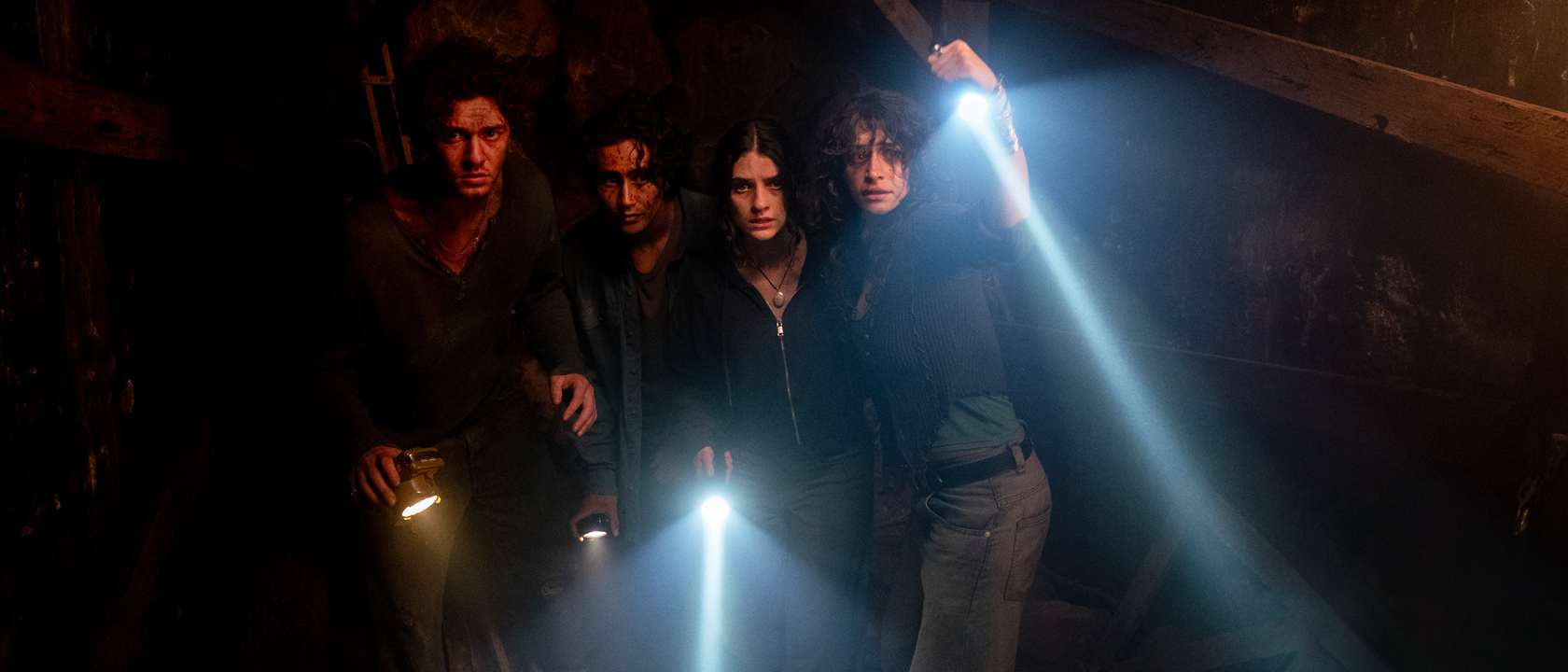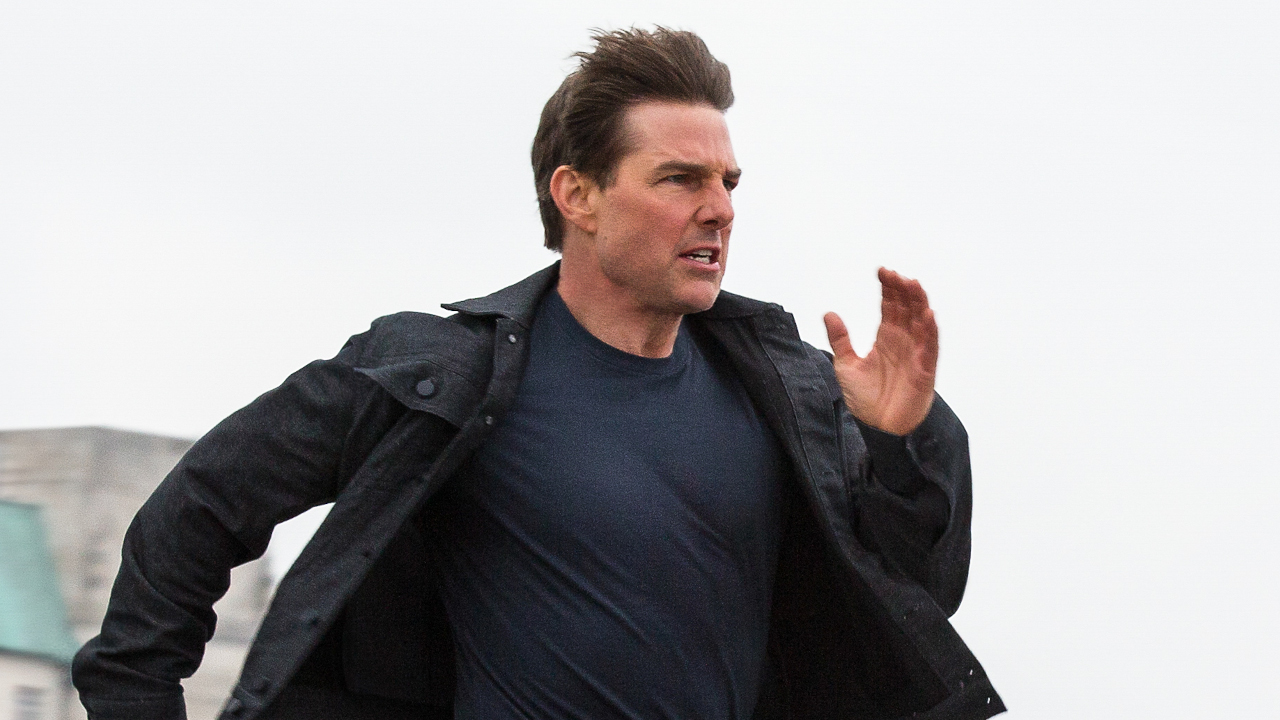The musical biopic has been all the rage in recent years, so much so that there has already been a fairly decent parody of the genre, Walk Hard. Writer/director Todd Haynes (Safe, Far From Heaven) decided that iconic singer/songwriter Bob Dylan would be less well served by a straightforward linear retelling of his life story. Haynes, instead, puts together a film about Dylan (which contains the onscreen credit “Inspired by the music and many lives of Bob Dylan”) in the style of a Dylan song; poetic, time shifting, ever changing, stream of consciousness, and more than a little confusing. I’m Not There covers the major periods of Dylan’s life and influence using six actors to portray his regularly shifting personas, none of whom are playing a character named Bob Dylan. The first is Woody (Marcus Carl Franklin) a young black folk prodigy representing Dylan’s folk/protest influences combined with his hiding his true origins when he hit New York in the early 1960’s. Jack (Christian Bale) shows up as the folkie Dylan who later converts to Christianity and becomes Pastor John. Jack gives way to Jude (Cate Blanchett) as the mid-60’s Dylan of Don’t Look Back, D.A. Pennebaker’s seminal documentary. Robbie (Heath Ledger), a non-musician, is an actor who played Jack in a movie (confused yet?) and represents Dylan’s turbulent married life. Arthur (Ben Whishaw) is a young poetic Dylan who provides the closest thing to a narration during a confusing interview/interrogation. Finally, Billy the Kid (Richard Gere) shows an older reclusive Dylan living in a surreal town filled with Carnival freaks.
The use of multiple actors playing the differing personas is just the beginning for Haynes. He mixes film types and styles to give each section a unique look, often in homage to various films or film genres in the past. His Dylans typically answer any question with more questions or an answer that sounds intriguing but makes little sense. There are tons of surrealism and dreams, but since everything is a big hodgepodge, it’s challenging to determine what is “real” and what is not. Even the characters fail to appear in any type of expected order. The whole movie is a puzzle with the message that, even if you put all the pieces in the right place, you won’t get a satisfactory picture.
Somehow, primarily through some key performances and Haynes’ overall interest in making something interesting out of the weirdness, it works. While this isn’t a movie for the Dylan novice, anyone with a basic interest in his work (or 60’s music in general) or experimental filmmaking will see this as an unusual and impressive technical achievement. Dylan nuts will cream their jeans parsing the hundreds of references that get dropped into every scene and tying them back to interviews, song lyrics, myths, and events in Dylan’s life. I couldn’t do that, but I did get the gist of what was being said and got a lot out of a few tour de force acting performances.
Blanchett is getting most of the accolades for her portrayal of Jude, and it’s well deserved. It’s also the showiest role and the easiest to do something with. She portrays the Dylan we know the best and does the closest thing to an impersonation. It’s magnetic, but in some ways easier than what was required of the other actors. Ledger, Franklin, and Whishaw are also excellent in more challenging roles (Ledger’s character of Dylan as husband and father is almost unlikeable.) Bale is not served well by the basic structure of his section. It’s a documentary style retrospective of his career which involves interviews with Julianne Moore as a Joan Baez stand-in and not a lot of direct dialogue by Bale. He does, however, get to deliver the best line in the movie, when explaining why he is going to be moving away from protest music to Jude’s electric phase: “They want me to write finger pointing songs… and I only got ten fingers.”
That leaves Gere’s Billy the Kid character. His section is key as it provides some bookending to other events in the movie, including Jude’s intellectual battle with journalist Mr. Jones (Bruce Greenwood), but it's dull. It’s weird for weird’s sake and sucks all the life out of the movie anytime it shows up. It keeps a good movie from being a great movie and, unlike every other representation in the movie, comes off almost too silly to be taken seriously.
The number of film and artistic references Haynes piles on top of all the Dylan references will make this an accessible movie for many non-Dylan obsessives. However, if you have little interest or knowledge of Dylan, then you should steer well clear. There is a baseline level of knowledge you need to even begin to get anything out of this film. If you do exceed that baseline, it’s worth checking out. It would be quite common for a movie this artsy and unique to leave viewers to their own devices in deciphering what it all means. The usual excuse is that the director does not want to “spoon feed” the audience. Haynes takes a different approach on this 2 Disc Collector’s Edition. He wants us, even those who aren’t fans of 60’s French cinema or the ins and outs of Bob Dylan, to get something out of our viewing experience.
To that end, Haynes provides a commentary track that focuses mostly on what influenced each shot. His clear philosophy is to make the movie something accessible to anyone, rather than simply the intellectual elite. He explains what each character is supposed to represent and what source material he used to come up with scenes and dialogue. He does talk a little about the filmmaking process, but most of his time is spent on saying “this is what I was going for here.” It’s extremely helpful and an uninitiated Dylan fan might be better off watching with the commentary turned on first. It’s also impressive that Haynes seems to have quite a few quotes, song lyrics, and writings by Dylan and others memorized, spouting them off at the appropriate time to bolster what is happening onscreen.
Not content to let his commentary be the viewers only shot at understanding what he's going for, Haynes has provided for an “Introduction to the Film” on Disc 1. The introduction consists of four articles that you can read to get a better understanding of the symbolism and characters in the film. All are fairly serious critical analysis of the movie, but even a more casual viewer should read the articles just to assist with their understanding. If the commentary and written analysis is not enough to help in understanding the movie and its references, Haynes sat for an interview where he covers many of the things he discusses in the commentary while adding a few others. If all of that still doesn’t bring you up to speed, there is a “Dylanography” which shows the treatment Haynes sent to Dylan to get him to allow his songs to be used in the film as well as a discography, acting roles, books, a timeline of his life, and pictures. Even if it doesn’t bring about a complete understanding of the movie, a viewer will certainly be more knowledgeable of Dylan’s life and influences after reading and viewing all of this material.
The other features on Disc 1 are more related to the music. One allows the viewer to jump directly to specific songs, rather than just specific scenes. If you have a Dylan favorite and want to see how it was placed in the film, this feature might be beneficial. In addition to the usual subtitles in English and Spanish, the disc gives the option to have just the song lyrics show up on screen.
Disc 2 is chock full of additional material, although oddly not any kind of “making-of” or “behind the scenes” documentary or featurette about the film. There is one about making the soundtrack and that is a pretty interesting process. The film included original Dylan recordings but anytime there was onscreen performing of his songs by one of the six characters, a cover version was used. The cover singers/bands included Sonic Youth, John Doe, Stephen Malkmus, and Mason Jennings.
There aren’t a plethora of deleted or alternate scenes, but a few are included. One involves Cate Blanchett’s character and the other features Richard Gere. Neither is particularly earth shattering, but the since the regular Gere scenes are less than exciting, the deleted scene is just more of the same. There are also four alternate or extended scenes. Just to show that the project doesn’t take itself too seriously, an outtake reel is included with the usual blown lines and on set goofing around.
There are only two “Screen Tests” provided: Marcus Carl Franklin and Ben Whishaw. Each shows early incarnations of their ultimate character. It’s interesting that none of the big four actors has material in this section. It’s possible they didn’t do a traditional audition, or they just have the clout to keep that type of thing off the DVD releases of their movies.
While trailers are usually considered filler material on DVD releases, this collection includes an unreleased trailer that mirrors Dylan’s “Subterranean Homesick Blues” segment from Don’t Look Back. The two released trailers are also included. There is also a segment on the walk down the red carpet for the film’s 2007 premier. The final extra is a short tribute to Heath Ledger who, of course, died recently.
The package of extras does a good job complimenting the film and in this case, that’s almost critical for most people who will view this based more on their interest in Blanchett’s performance or maybe Ledger’s, rather than specific Dylan knowledge. The transfer is excellent and there is a fantastic contrast in the different visual styles used. The sound is also top notch and the music, which plays such a key role, is crisp and clear. It’s all very well done.
Tom Cruise's Running Style In The Mission: Impossible Films Is Iconic, And Apparently, It's Connected To One Of His Outsiders Co-Stars
Somebody Actually Used It’s Always Sunny In Philadelphia’s Musical To Propose, And It’s Weirdly Sweet
Hunger Games Fans Can't Stop Talking About How The Sunrise On The Reaping Casting Connects To Rachel Zegler's Character











